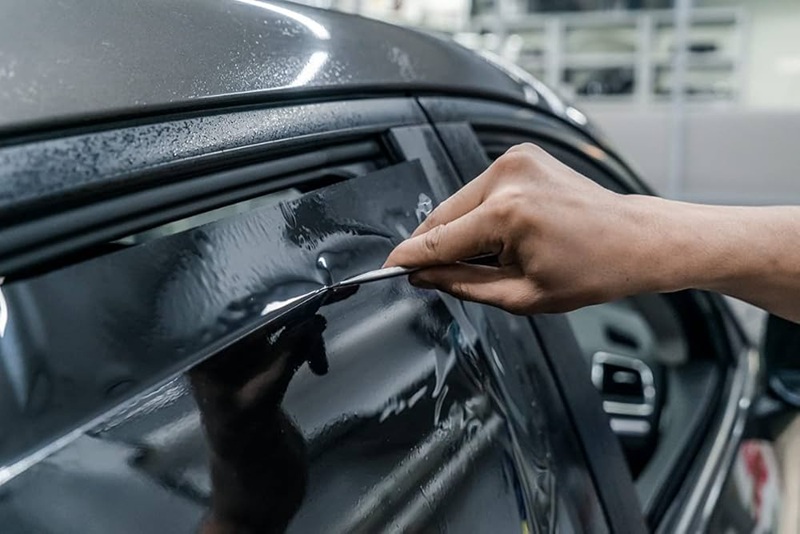The Environmental Economics of Home Climate Control
Window solar film represents one of those rare intersections where personal comfort, economic savings, and environmental responsibility converge in a single, relatively simple intervention. When we examine the energy flows in the typical building—residential or commercial—we discover that windows account for approximately 30% of heating and cooling energy usage, creating a significant opportunity for improved efficiency with relatively modest investment. This overlooked aspect of building performance has profound implications not just for individual energy bills but for our collective carbon footprint.
The Science Behind the Shield
Understanding how these nearly invisible films achieve their remarkable effects requires a brief excursion into materials science and spectral physics.
Modern solar films operate through sophisticated mechanisms:
- Selective filtering of solar radiation wavelengths
- Microscopic metal or ceramic particles that reflect infrared energy
- Multi-layer constructions that offer different benefits at different depths
- Spectrally-selective technologies that maximize light while minimizing heat
- Nano-ceramic particles that avoid the corrosion issues of earlier metallized films
“In Singapore’s equatorial climate, the science of solar spectrum management becomes particularly crucial,” explains Dr. Lim Seng Wei, materials scientist at the National University of Singapore’s Building Efficiency Research Centre. “Our measurements show that properly specified window films can reduce solar heat gain by up to 78% in typical commercial buildings, dramatically altering the cooling load equation.”
Beyond Temperature: The Multiple Benefits Paradigm
The Ultraviolet Protection Imperative
While temperature regulation often drives the initial interest in window films, the ultraviolet protection they provide represents a significant but underappreciated benefit:
- Prevention of furniture and flooring fading, extending interior investment lifespans
- Reduction of harmful UV-A and UV-B radiation linked to skin damage
- Protection of artwork and valuable documents from deterioration
- Preservation of retail merchandise in commercial settings
- Mitigation of the “greenhouse effect” in sunroom and conservatory spaces
This protection operates continuously and passively, requiring no user intervention or maintenance.
The Energy Economics Equation
The financial calculus of window film installation reveals a compelling return-on-investment story rarely seen in home improvements:
- Typical payback periods of 2-5 years through energy savings alone
- Reduced HVAC maintenance costs due to lower operational demands
- Extended equipment lifespan through reduced cycling frequency
- Potential utility rebates and incentives in many jurisdictions
- Increased property value through improved energy performance ratings
“When conducting cost-benefit analyses for commercial buildings in Singapore’s central business district, we consistently find ROI periods under 36 months for quality solar film installations,” notes Tan Mei Ling, senior energy auditor at Singapore Sustainable Building Solutions. “Few other building interventions offer such compelling economics with so little disruption.”
The Installation Reality: Less Disruption Than Expected
Professional Application: Art and Science Combined
The application process, while technically demanding, has evolved to minimize disruption:
- Non-intrusive installation requiring no structural modifications
- Typical installation times of 1-2 days for average residences
- Minimal preparation requirements beyond basic window cleaning
- Immediate functionality with no “curing” periods in most cases
- Manufacturer warranties typically spanning 10-15 years
This combination of rapid installation and long-term performance creates an attractive proposition for property owners sensitive to disruption.
The Selection Process: Navigating Complex Choices
Beyond Darkness: Understanding Specification Metrics
The uninitiated consumer often focuses exclusively on tint darkness, missing the more sophisticated performance metrics that truly matter:
- Solar Heat Gain Coefficient (SHGC): The percentage of solar energy transmitted
- Visible Light Transmission (VLT): The percentage of visible light allowed through
- Ultraviolet Rejection: The percentage of UV radiation blocked
- Infrared Rejection: The percentage of heat-carrying infrared energy blocked
- U-Value Impact: The film’s effect on the window’s insulating properties
“Many Singaporean consumers initially request ‘the darkest film available,’ not realizing that modern spectrally-selective films can deliver superior heat rejection with much higher visible light transmission,” explains James Chen of Premium Solar Solutions Singapore. “Education about these performance metrics fundamentally changes the customer’s decision framework.”
Climate Context: The Local Adaptation Imperative
Window films must be specified differently based on regional climate conditions:
- Equatorial regions benefit from maximum solar rejection properties
- Temperate climates may require balanced specifications for seasonal variation
- Northern exposures require different treatment than southern exposures
- Urban heat island effects may intensify requirements in city centres
- Coastal environments introduce considerations about salt exposure and corrosion
The Global Impact: Scaling Individual Actions
The Carbon Mathematics of Building Efficiency
When aggregated across urban landscapes, window film installation represents a significant carbon reduction opportunity:
- Commercial building energy consumption reduction potential of 5-15%
- Residential cooling load reductions of 30-50% in sun-exposed rooms
- Reduced peak demand on strained electrical grids during heat events
- Decreased carbon emissions from both direct energy use and embodied energy
- Extension of building envelope lifespans through reduced thermal stress
“If comprehensively deployed across just Singapore’s commercial sector, window films could reduce carbon emissions by approximately 35,000 metric tons annually—equivalent to removing 7,500 cars from the road,” calculates Dr. Wong Mei Lin, an environmental economist at Singapore’s Climate Action Research Initiative.
Conclusion: The Transparent Solution to Opaque Problems
In our search for climate solutions, we often overlook the most accessible interventions in favor of more dramatic technological moonshots. Yet the cumulative impact of proven, cost-effective measures like window films represents perhaps our most realistic path toward meaningful energy reduction. As building owners increasingly recognize the intersection of economic self-interest with environmental responsibility, the humble window film transforms from a mere aesthetic consideration to a crucial component of climate-responsive design. For homeowners and property managers seeking tangible steps toward sustainability without sacrificing comfort or requiring major capital investment, few options offer the immediate impact and proven performance of quality window solar film.

Comments are closed.